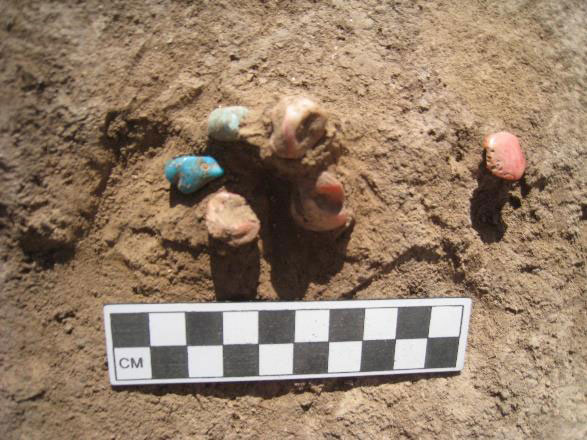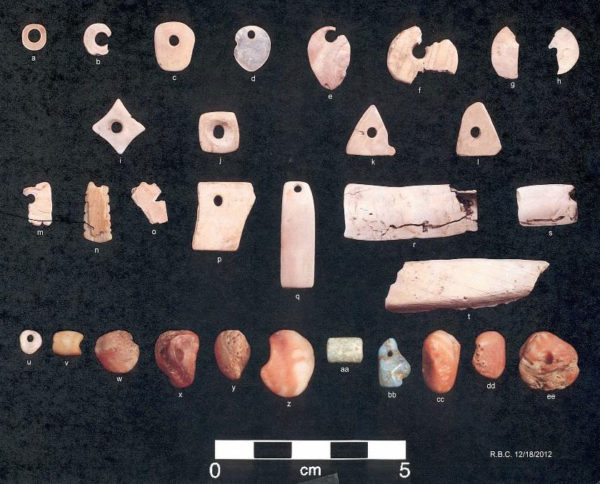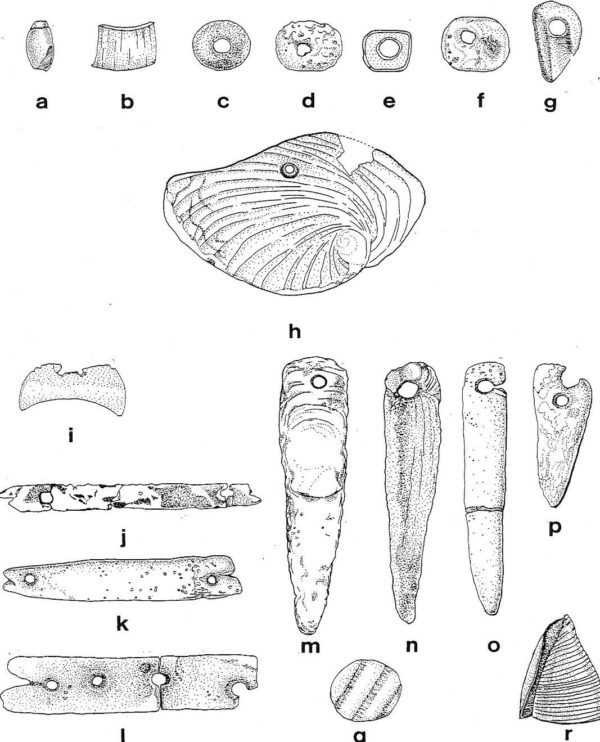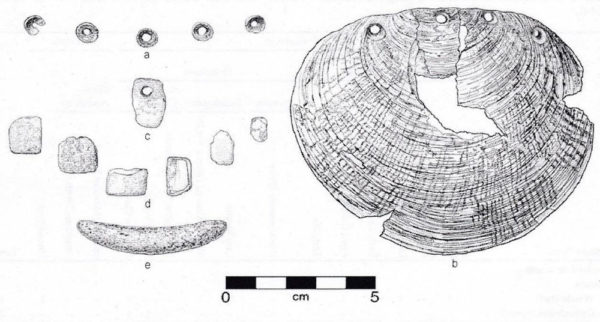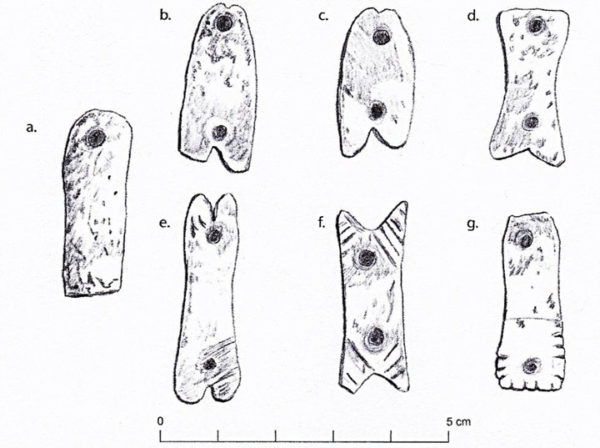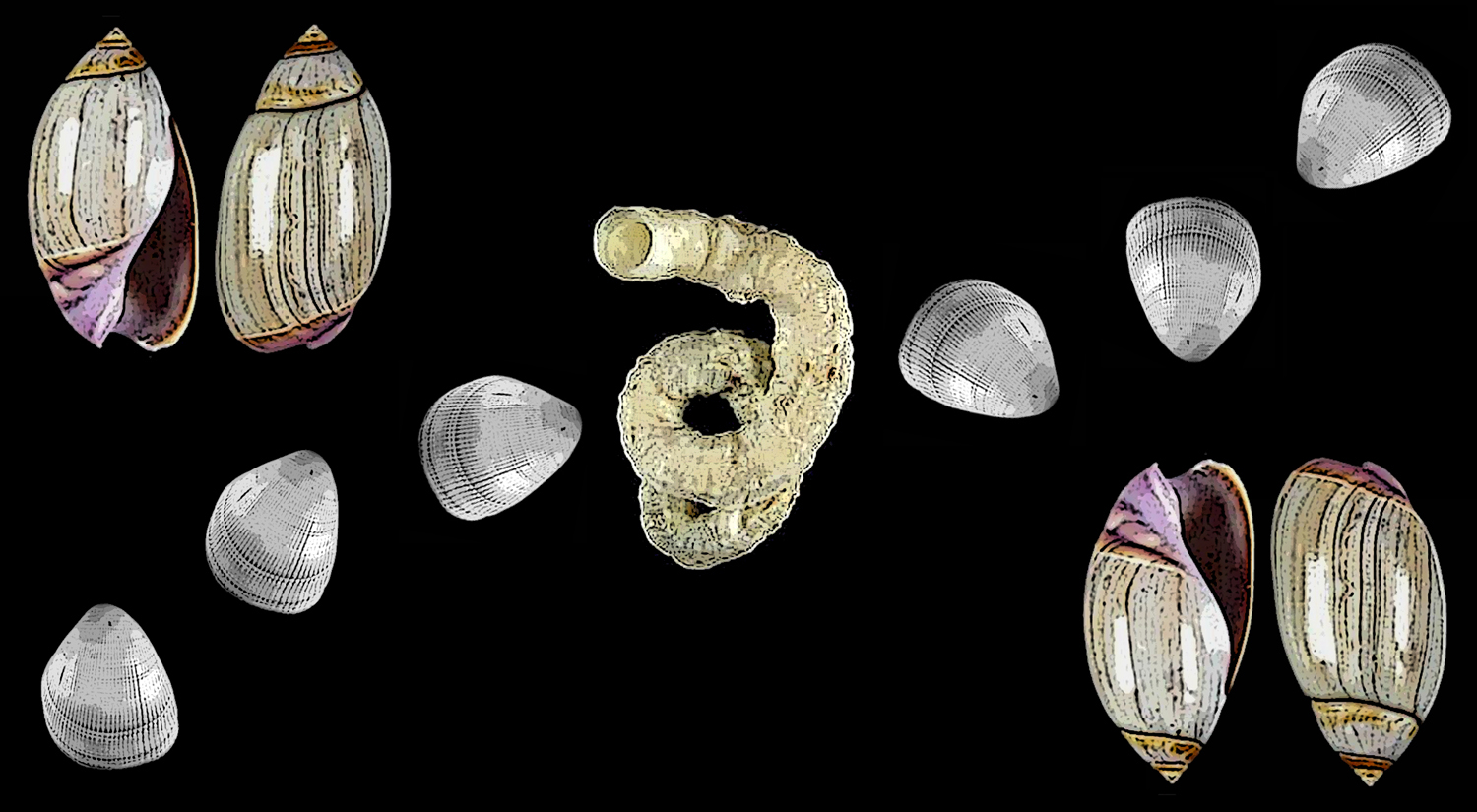
Early Agricultural Period Shell Ornaments in the Tucson Basin
Desert Archaeology shell specialist Chris Lange provides an expanded version of a poster she presented at the 91st annual Pecos Conference (August 9-11, 2018) in Flagstaff, Arizona.
Recent excavations at Early Agricultural period sites in the Tucson Basin have produced a number of marine shell ornaments. Sites dating to the San Pedro phase (1200-800 BC) include Las Capas, Milagro, El Taller, and the Dairy Site. Cienega phase (800 BC-AD 50) sites include Clearwater, Los Pozos, Coffee Camp, Santa Cruz Bend, and Stone Pipe.
What can be learned from studying shell artifacts? First, the majority of the shell found came from either the Gulf of California or coastal southern California; very few freshwater shells from the Santa Cruz River have been discovered. Archaeological work done in California and northern Mexico tells us that shell manufacturing industries thrived in those areas, where people specialized in making ornaments for trade. These artisans were active participants in social and economic networks extending far outside of their immediate surroundings.
The people living in the Tucson Basin placed a high value on shell ornaments. They acquired shell ornaments by either traveling to the far off coasts, or through the items passing from village to village, eventually arriving in the villages along the Santa Cruz.
Many different marine shell species were used for beads and pendants found in the Tucson Basin. Identified marine shell genera from the Gulf of California recovered include bivalves such as Laevicardium, Spondylus,Chama, Pteria, Pinctada, Dosinia, Trachycardium, and Codakia. Gastropods preferred for whole shell beads and pendants include Olivella dama, Conus, Cypraea, Columbella, Agaronia, Oliva, Theodoxus, Turitella, and Acmaea.
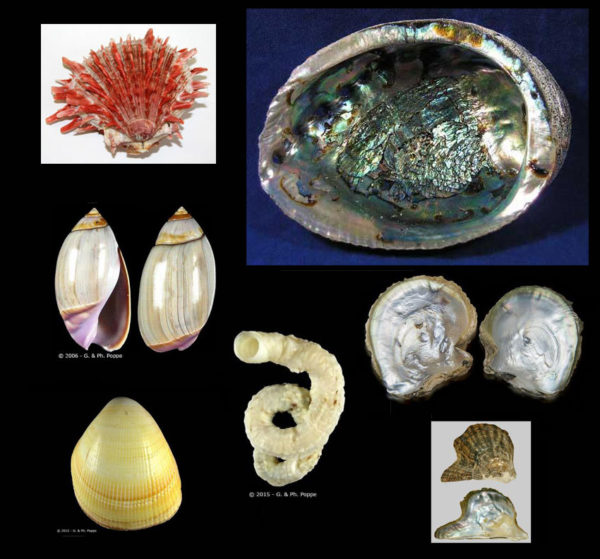
Shell species from the Gulf of California or the California coast that have been found in the Tucson Basin.
Beads and pendants from these whole shells were relatively simple to make—the ends were ground off to create a hole through which a fiber could be threaded through to create a necklace, or to allow the item to be sewn to clothing or other textile, basketry, or animal hide. Tubular beads manufactured from segmented Vermetus worm tubes—also from the Gulf—were strung to form necklaces or used singly as spacers on necklaces.
Pteria, Pinctada, and various species of Haliotis (abalone) from both the Gulf of California and the Pacific coast of southern California, were also utilized. Abalone from the California coastal waters were often used by California artisans for making cut shell beads and pendants. Discoidal beads manufactured from Olivella biplicata shells, a small gastropod also native to coastal California, have been part of the California shell ornament repertoire for millennia and were oftentimes used as a form of currency, gradually finding their way (albeit in smaller amounts) across the Southwest.
Some shell species and ornament styles may be temporally sensitive. For example, disk “ring” beads manufactured from marine nacreous shells seem to be specific to the San Pedro phase at Las Capas. It is possible that changes in beads and ornaments over time may reflect changes in social organization and exchange partners, or perhaps evolving fashions, similar to how clothing changes today.
Cut shell pendants and beads were typically geometric forms—ovals, triangles, circles, rectangles, and squares. These required a degree of skill to manufacture. Sometimes the form was left plain, while in other cases the ornament was decorated with serrated edges and incised lines on the surface. Life forms such as human or animal figures have not been found.
Early Agricultural period shell assemblages are relatively small, but are quite diverse, incorporating several species. They are mostly recovered as single occurrences from pits, the fill of pit houses, roasting pits and trash middens. Occasionally, a shell pendant or bead, along with other artifacts including projectile points, will be recovered from the fill of a posthole or floor pit, suggesting that it may have been intentionally placed as an offering during the construction of the feature or at the closing of the feature.
Funerary features contain more shell ornaments than other types of features. At the Wetlands site, an abalone pendant, an unperforated abalone shell, and 46 rectangular and triangular pendants were found in a secondary mortuary feature containing the remains of seven individuals.
A cremation from the Coffee Camp site had 885 square beads. Shell ornaments recovered from a mortuary feature containing the remains of a male at the Clearwater Site appear to be part of a composite necklace that included a cruciform of white quartz.
At Los Pozos, a set of elongated pendants with perforations at each end were found in a mortuary feature containing the remains of an adult female. These may be from a necklace or may have been sewn onto a textile used to wrap the body.
Archaeological excavations at Early Agricultural period sites in the Tucson Basin began in 1994. In the 24 years since, work by Desert Archaeology and other cultural resources management firms has revolutionized our understanding of the lives of these early farmers. The shell artifacts found contribute to our knowledge about trade networks, mortuary practices, and stylistic changes.
Funding for the Desert Archaeology projects discussed in this blog came from the City of Tucson, Pima County, and the Arizona Department of Transportation.


